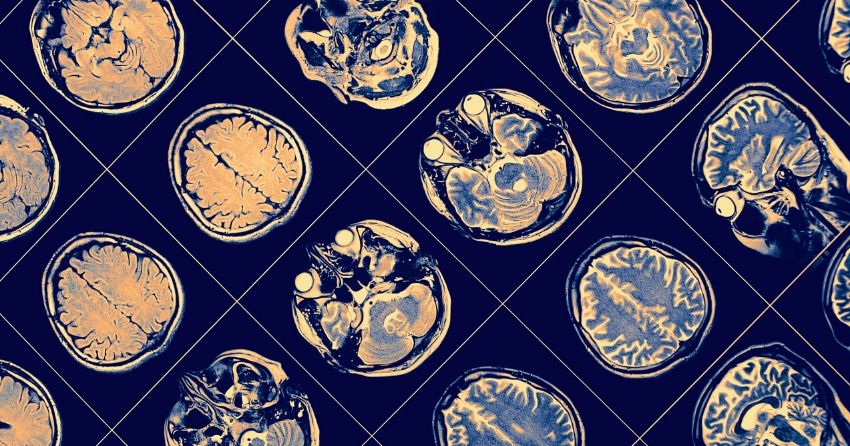Scientists Identify Blood Proteins Predictive of Future Dementia Risk

Our blood is a highway for information. Plasma, the liquid component of blood, acts like the road through which all sorts of molecules can travel. On this sanguineous fluid path, proteins serve as one of the major classes of vehicles.
Blood levels of several proteins have been linked with the risk for Alzheimer’s disease and dementia. However, we know little about the full range of changes to the proteins in blood plasma in the years preceding dementia. Understanding the changes to protein levels in plasma that precede the onset of dementia could yield insights into disease biology and highlight new biomarkers and avenues for intervention.
By looking at thousands of older individuals, most of which were healthy and the rest had dementia, researchers from the Johns Hopkins University School of Medicine found 38 proteins that were linked with dementia. Of these, 16 were also associated with late-life dementia risk when measured in plasma collected nearly 20 years earlier, during mid-life.
This study by Walker and colleagues not only offers new insight into the biological changes that may precede dementia onset but also provide markers and potential drug targets. "Some of these proteins we uncovered are just indicators that disease might occur, but a subset may be causally relevant, which is exciting because it raises the possibility of targeting these proteins with future treatments,” said study senior author Josef Coresh, MD, PhD, MHS.
The Path To Predicting Brain Health
There have been studies that examine the activity of genes — which results in the production of proteins — that coincide with dementia. However, proteins are more directly linked to disease than gene activity. So, surveying protein changes might offer new insights into the risk of incident dementia.
But, the idea of looking at proteins related to dementia and Alzheimer’s disease isn’t a new concept. There have been several studies looking at the protein differences between individuals living with Alzheimer’s dementia and non-demented older adults.
Although these studies have been informative, they were limited by modest sample sizes and by technological challenges permitting a survey of only a small fraction of the human proteome — the collection of all of our proteins. Furthermore, plasma proteomic studies of dementia to date have been unable to determine whether there are proteomic signatures of dementia in the years preceding its onset.

Pinning Down Proteins Predictive of Brain Problems
In this study, Walker and colleagues tested whether widespread changes to protein levels can (1) be detected in blood many years before dementia onset and (2) be used to better understand the molecular pathways altered in the preclinical phase of dementia. Using new technology that enables the simultaneous assessment of thousands of circulating proteins, the current study takes a new, relatively unbiased approach to the discovery of blood-based dementia biomarkers, some of which could also be causal disease mediators.
Walker and colleagues examined the relationship between the plasma level of 4,877 proteins and risk for incident dementia in a large biracial community-based sample of older adults from the Atherosclerosis Risk in Communities (ARIC) study in the United States. Walker and colleagues found the level of 38 unique proteins to be significantly associated with dementia risk over the subsequent 5 years.
Nearly half of these 38 proteins also demonstrated a robust association with a different set of incident dementia cases when measured in blood collected nearly 20 years earlier. What’s more is that a number of these associations were further reinforced by validation in a population on a different continent. To do so, they confirmed that a number of these proteins were linked with dementia risk in another study called the Age, Gene/Environment Susceptibility (AGES)-Reykjavik Study, a prospective community-based cohort in Europe (Iceland).
Tilling Therapeutic Targets
Additionally, Walker and colleagues analyzed the dementia-associated proteins to characterize the biological mechanisms and regulatory pathways linked with dementia risk. They used brain imaging to relate these proteins to markers of brain structural integrity and molecular disease characteristics relevant to Alzheimer’s.
Leveraging published studies from external consortia, they also investigated causal links between dementia-linked proteins and Alzheimer’s disease to identify new potential therapeutic targets. In particular, two dementia-associated proteins (SVEP1 and angiostatin) were causally implicated in Alzheimer’s disease.
SVEP1, an immunologically relevant cellular adhesion protein, was found to be part of larger dementia-linked protein networks, and circulating levels were associated with atrophy in brain regions vulnerable to Alzheimer’s disease. “To our knowledge, no previous study has demonstrated an association between SVEP1 protein level and neurodegenerative disease,” stated Walker and colleagues.
"This is the most comprehensive analysis of its kind to date, and it sheds light on multiple biological pathways that are connected to Alzheimer's," proposed Dr. Coresh. Walker and colleagues propose that proteins that show (1) a mid-life and late-life link with dementia risk and (2) an association with atrophy in Alzheimer’s vulnerable brain regions, like SVEP1, should be prioritized for investigation of Alzheimer’s disease therapeutic potential. What’s more, there are already drugs currently available that target some of these high-priority proteins.
References:
Walker, K.A., Chen, J., Zhang, J. et al. Large-scale plasma proteomic analysis identifies proteins and pathways associated with dementia risk. Nat Aging 1, 473–489 (2021). https://doi.org/10.1038/s43587-021-00064-0





